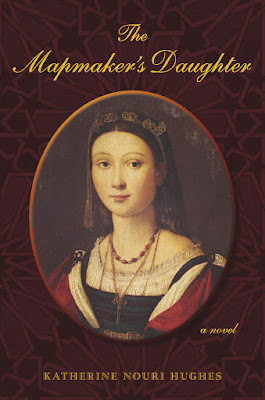Mavi Boncuk |
President Recep Tayyip Erdoğan has announced the new ministers of his cabinet as Turkey officially switched to an executive presidency.
Following an official inauguration ceremony at the presidential complex in Ankara on July 9, Erdoğan announced the full list of minister with a press conference as follows:
Vice President: Fuat Oktay
Justice Minister- Abdülhamit Gül
Foreign Minister: Mevlüt Çavuşoğlu
Interior Minister: Süleyman Soylu
Defence Minister: Hulusi Akar
Treasury and Finance Minister: Berat Albayrak
Energy and Natural Resources Minister: Fatih Dönmez
Industry and Development Minister: Mustafa Varank
Commerce Minister: Ruhsar Pekcan
Environment and Urban Minister: Murat Kurum
National Education Minister: Ziya Selçuk
Health Minister: Fahrettin Koca
Transport and Infrastructure Minister: Cahit Turan
Culture and Tourism Minister: Mehmet Ersoy
Labor, Social Services and Family Minister: Zehra Zümrüt Selçuk
Agriculture and Forest Minister: Bekir Pakdemirli
Youth and Sports Minister: Mehmet Muharrem Kasapoğlu
The ministers will take their oats on July 10.
Erdoğan appointed Chief of General Staff Gen. Hulusi Akar as the new defense minister and his son-in-law Berat Albayrak as the Treasury and Finance Minister in a 16-seat surprise cabinet with not much known bureaucratic figures, hours after he was sworn into office on July 9.
Erdoğan’s vice president is Fuat Oktay, former undersecretary of the office of the prime minister, who is regarded as one of the architects of the bureaucratic and administrative transformation after the governmental system has been shifted into presidency through last year’s referendum.
Erdoğan opted to continue with current Justice Minister Abdülhamit Gül, Interior Minister Süleyman Soylu and Foreign Minister Mevlüt Çavuşoğlu in the new cabinet.
These figures, along with Berat Albayrak, who will serve as the Treasury and Finance Minister, will have to resign from the Parliament to join the cabinet.
President’s choice as the Trade Minister Ruhsar Pekcan, a businesswoman who has been serving at Turkey’s largest trade chamber as the deputy head for the woman entrepreunership and at Foreign Economic Relations Board (DEİK).
Mustafa Varank, one of closest aides of Erdoğan, will serve as the Industry and Development Minister in the new cabinet.
Undersecretary of the Energy Ministry Fatih Dönmez is appointed as the Energy Minister while Cahit Turan, former head of the Directorate of Highways, will serve as the Transportation and Infrastructure Minister.
Education Minister Ziya Selçuk has long served at the Education Ministry but he is well-known as the owner of a private college in Turkey.
President Recep Tayyip Erdoğan has announced the new ministers of his cabinet as Turkey officially switched to an executive presidency.
Following an official inauguration ceremony at the presidential complex in Ankara on July 9, Erdoğan announced the full list of minister with a press conference as follows:
Vice President: Fuat Oktay
Justice Minister- Abdülhamit Gül
Foreign Minister: Mevlüt Çavuşoğlu
Interior Minister: Süleyman Soylu
Defence Minister: Hulusi Akar
Treasury and Finance Minister: Berat Albayrak
Energy and Natural Resources Minister: Fatih Dönmez
Industry and Development Minister: Mustafa Varank
Commerce Minister: Ruhsar Pekcan
Environment and Urban Minister: Murat Kurum
National Education Minister: Ziya Selçuk
Health Minister: Fahrettin Koca
Transport and Infrastructure Minister: Cahit Turan
Culture and Tourism Minister: Mehmet Ersoy
Labor, Social Services and Family Minister: Zehra Zümrüt Selçuk
Agriculture and Forest Minister: Bekir Pakdemirli
Youth and Sports Minister: Mehmet Muharrem Kasapoğlu
The ministers will take their oats on July 10.
Erdoğan appointed Chief of General Staff Gen. Hulusi Akar as the new defense minister and his son-in-law Berat Albayrak as the Treasury and Finance Minister in a 16-seat surprise cabinet with not much known bureaucratic figures, hours after he was sworn into office on July 9.
Erdoğan’s vice president is Fuat Oktay, former undersecretary of the office of the prime minister, who is regarded as one of the architects of the bureaucratic and administrative transformation after the governmental system has been shifted into presidency through last year’s referendum.
Erdoğan opted to continue with current Justice Minister Abdülhamit Gül, Interior Minister Süleyman Soylu and Foreign Minister Mevlüt Çavuşoğlu in the new cabinet.
These figures, along with Berat Albayrak, who will serve as the Treasury and Finance Minister, will have to resign from the Parliament to join the cabinet.
President’s choice as the Trade Minister Ruhsar Pekcan, a businesswoman who has been serving at Turkey’s largest trade chamber as the deputy head for the woman entrepreunership and at Foreign Economic Relations Board (DEİK).
Mustafa Varank, one of closest aides of Erdoğan, will serve as the Industry and Development Minister in the new cabinet.
Undersecretary of the Energy Ministry Fatih Dönmez is appointed as the Energy Minister while Cahit Turan, former head of the Directorate of Highways, will serve as the Transportation and Infrastructure Minister.
Education Minister Ziya Selçuk has long served at the Education Ministry but he is well-known as the owner of a private college in Turkey.


































